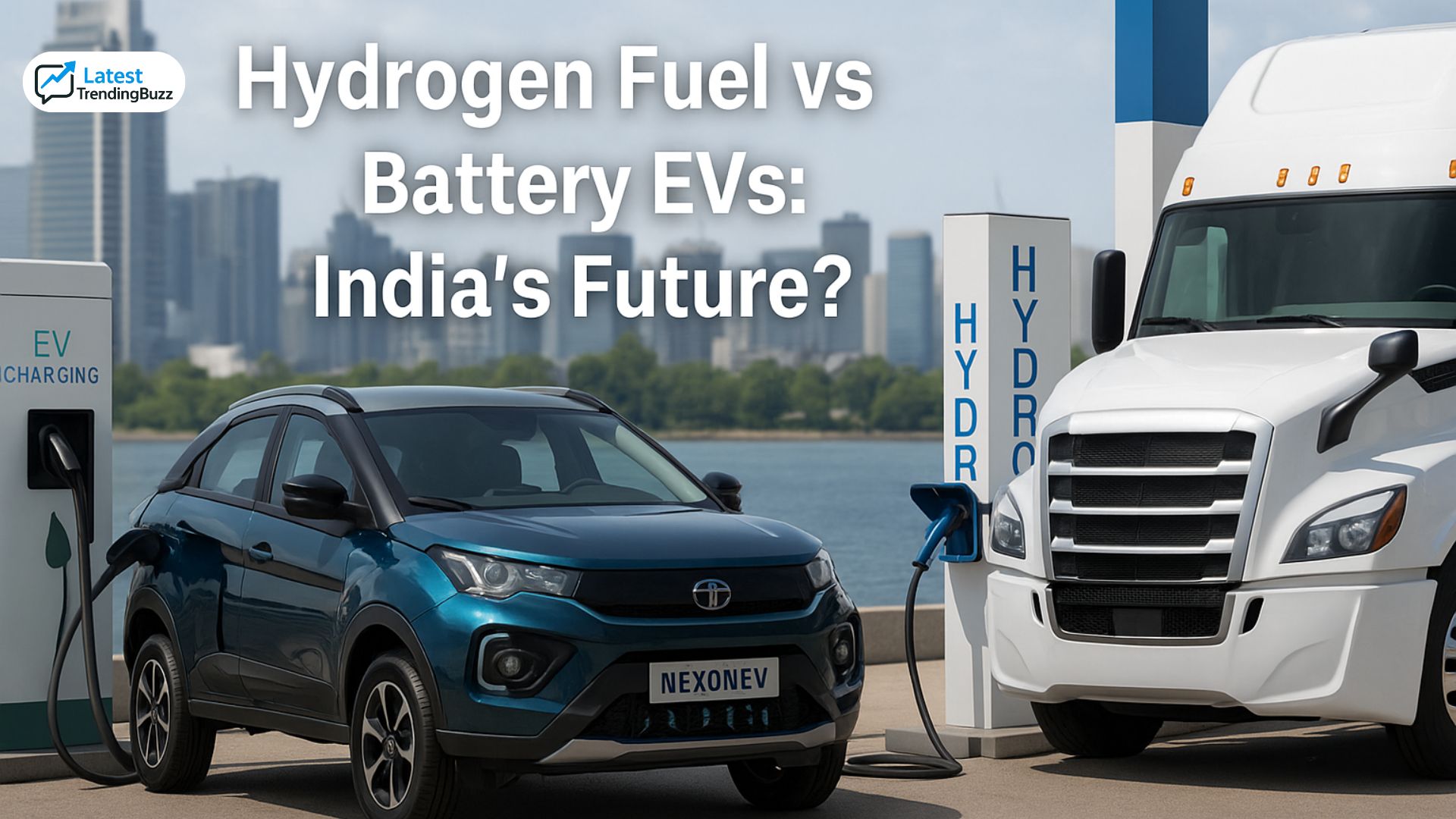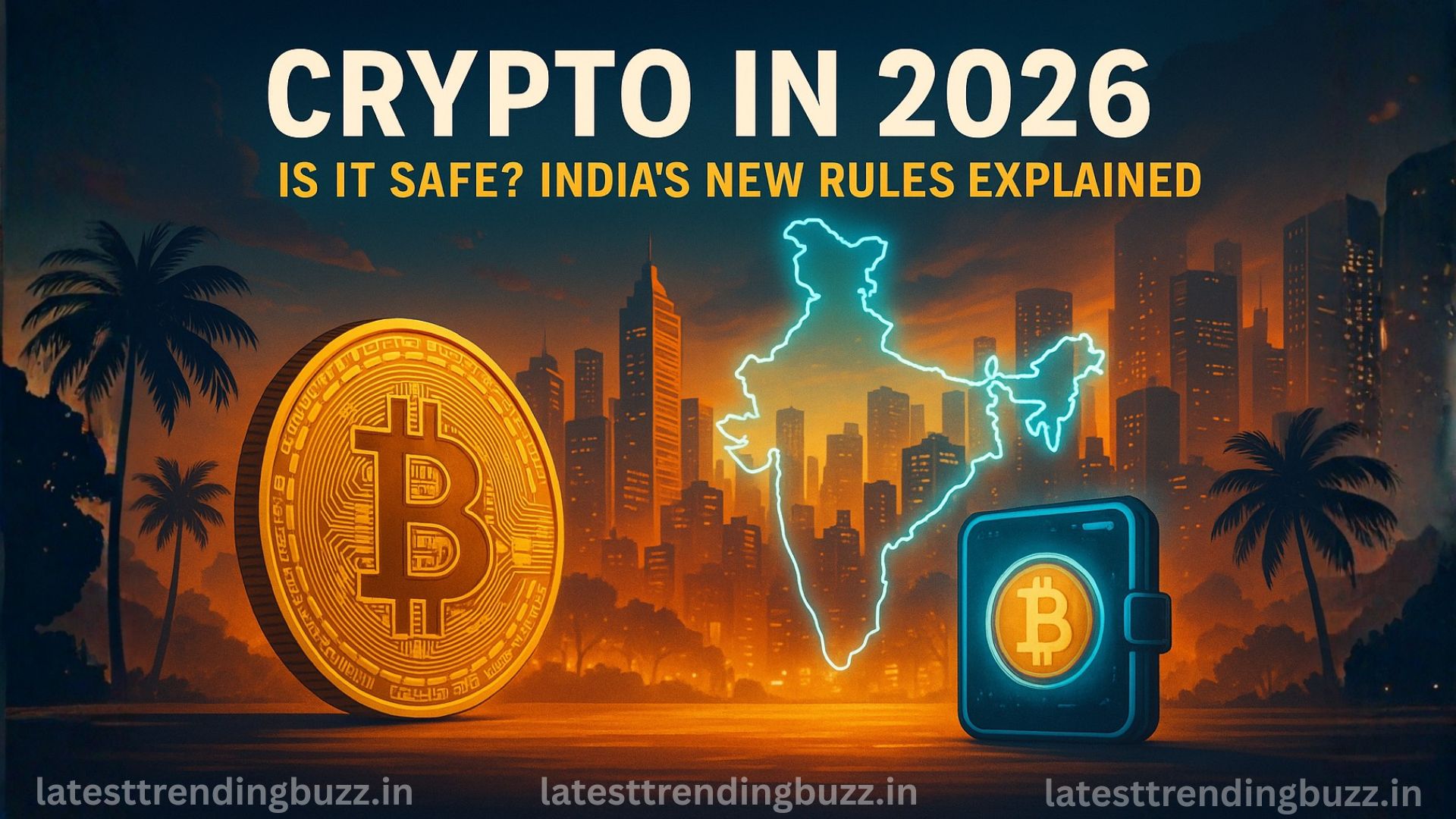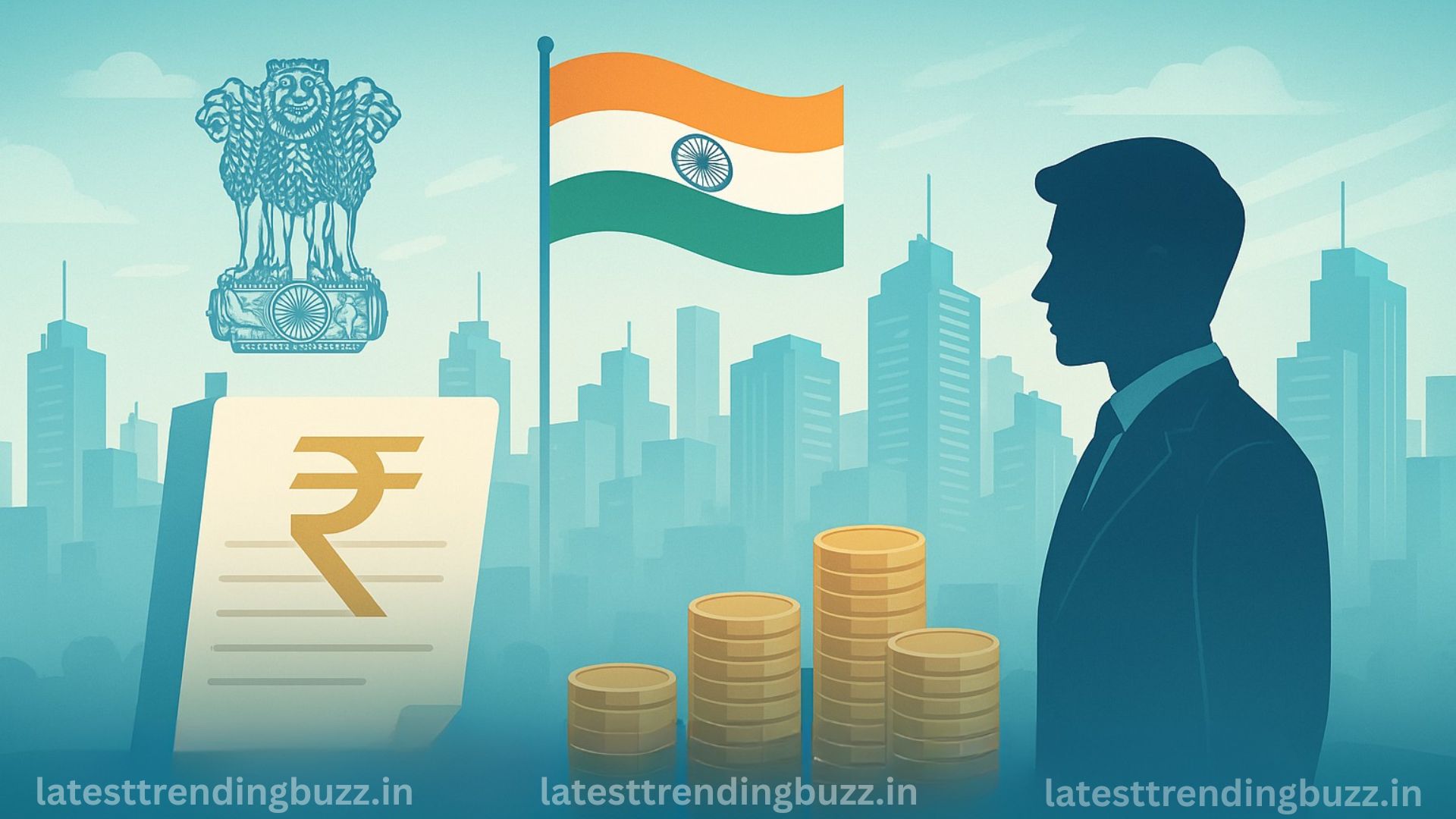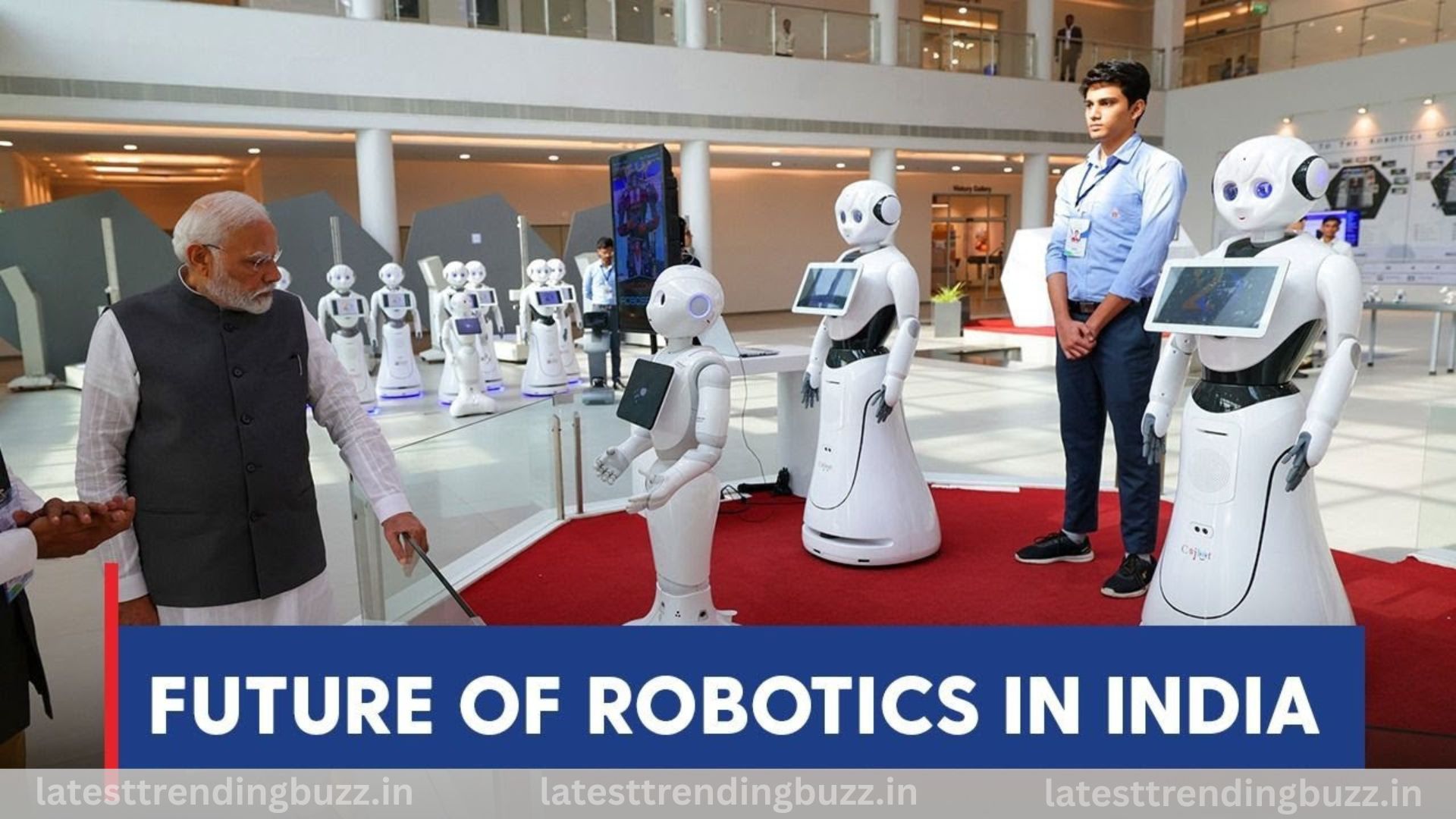The automobile industry in India is standing at a defining crossroad. For decades, the market has been dominated by petrol and diesel, but with rising fuel costs, escalating pollution levels, and relentless global pressure to decarbonize, the shift to green vehicles is no longer optional—it’s an inevitable imperative. At the heart of this transformative shift lies one crucial debate: hydrogen fuel vs battery EVs.
Globally, leading nations are investing billions in both technologies, recognizing their distinct roles in the future of mobility and energy security. India, as one of the largest and fastest-growing auto markets in the world, cannot afford to choose wrongly. The implications of this decision will ripple through its energy landscape, industrial policy, environmental health, and economic independence. But is it really a question of choosing one over the other—or does the future hold a delicate balance where both thrive together, catering to different segments and solving diverse challenges? Let’s unpack the science, economics, infrastructure, and social impact behind this high-stakes race.
🔍 Understanding the Basics
To appreciate the nuances of this debate, it’s essential to grasp the fundamental differences in how BEVs and FCEVs operate.
What are Battery Electric Vehicles (BEVs)?
BEVs run exclusively on electricity stored in rechargeable battery packs, typically lithium-ion batteries. These vehicles are powered by electric motors, drawing energy directly from the battery. They are charged by plugging into an external electricity source, from home outlets to public fast-charging stations. In India, popular models like the Tata Nexon EV and Mahindra XUV400 are already a visible reality.
What are Hydrogen Fuel Cell Vehicles (FCEVs)?
FCEVs generate their own electricity on board through a chemical reaction involving hydrogen gas and oxygen inside a fuel cell. They emit only water vapor. The “green” aspect depends on the hydrogen’s production method, with “green hydrogen” produced via renewable energy being the ideal. Globally, the Toyota Mirai and Hyundai Nexo are pioneers. In India, pilot hydrogen buses are being tested in cities like Delhi and Pune, signaling early exploration for heavy-duty applications.
The hydrogen fuel vs battery EVs debate often boils down to practicality versus potential, with BEVs currently dominating the practicality aspect for light-duty vehicles.
⚡ Why Battery EVs Lead Today
The current landscape in India clearly shows BEVs in the lead, particularly for passenger cars and two-wheelers, driven by several factors:
- Market Availability and Affordability: The Indian market has seen a proliferation of BEV models across various price points. Affordable BEVs under ₹15 lakh, such as the Tata Tiago EV, are increasingly accessible for Indian families.
- Infrastructure Growth: India’s EV charging infrastructure is growing rapidly. As of August 1, 2025, over 29,277 public EV charging stations have been installed across the country. This growing network, though with challenges of reliability and distribution, alleviates some range anxiety for urban commuters.
- Government Support and Incentives: The Indian government has actively promoted BEV adoption. The Electric Mobility Promotion Scheme (EMPS) 2024 continues to provide subsidies, primarily for electric two-wheelers and three-wheelers, until July 31, 2024. The Production Linked Incentive (PLI) scheme for Advanced Chemistry Cell (ACC) Battery Storage (₹18,100 crore outlay) aims to boost domestic battery manufacturing. State governments also offer additional incentives and tax waivers.
- Lower Running Costs: Electricity is significantly cheaper than petrol or diesel. With running costs of approximately ₹1-2 per km for BEVs, compared to ₹8-10 per km for petrol vehicles, the economic advantage is a powerful incentive for consumers and fleet operators.
- Consumer Confidence: BEVs offer a seamless experience for daily commutes with overnight home charging, reduced noise, and smooth acceleration, building consumer confidence.
For now, BEVs are winning the hydrogen fuel vs battery EVs race in passenger cars and two-wheelers, driven by their accessibility, lower operational costs, and growing support ecosystem.
🔋 Why Hydrogen Cannot Be Ignored
Despite BEVs’ current lead, hydrogen fuel cell technology presents compelling advantages that ensure its place in India’s long-term energy strategy:
- Quick Refueling: FCEVs refuel in around 5 minutes, comparable to petrol/diesel, a stark contrast to BEV charging times. This is crucial for high-utilization vehicles and long-haul transport.
- Longer Range: FCEVs offer a longer driving range (600-700 km) per fill, making them suitable for intercity travel and logistics where charging infrastructure might be sparse.
- Heavy Vehicles Advantage: The quick refueling and long range make FCEVs ideal for heavy-duty applications like trucks, buses, and industrial fleets, where battery weight and volume are prohibitive for BEVs. India is already testing pilot hydrogen buses.
- Energy Storage and Grid Balancing: Hydrogen can store excess renewable energy (power-to-gas), helping to balance the grid and ensure a stable supply of clean energy.
- Strategic Value and Energy Independence: A domestic green hydrogen economy can significantly reduce India’s reliance on imported fossil fuels, contributing to energy independence. The National Green Hydrogen Mission aims to make India a “Global Hub for production, usage and export of Green Hydrogen.”
These advantages highlight why policymakers continue to keep the hydrogen fuel vs battery EVs question open for long-term strategic planning, particularly for decarbonizing hard-to-abate sectors.
Also Read: 10 AI Prompt Hacks for Making Killer Social Media Graphics—Fast
📊 Detailed Comparison
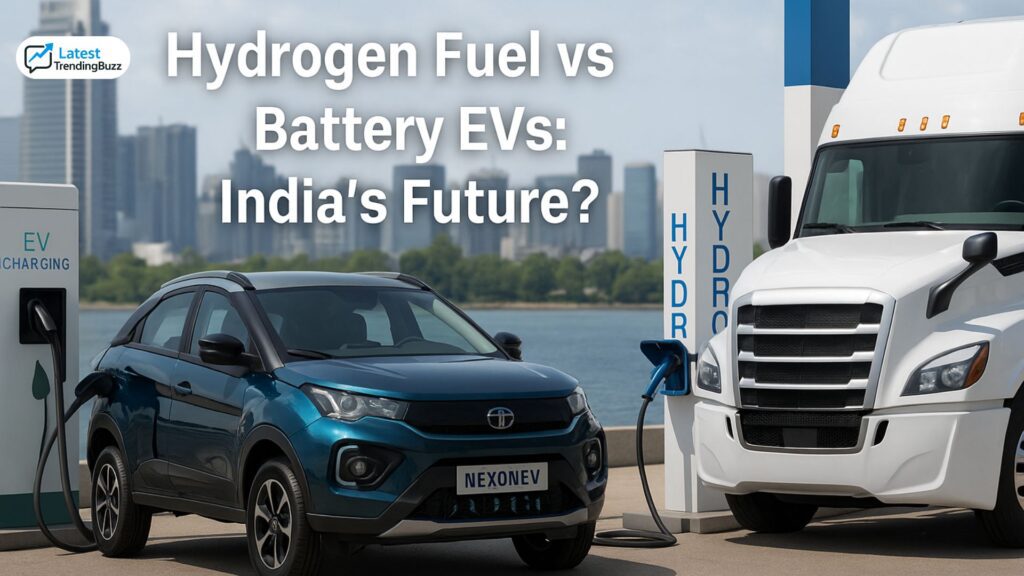
| Factor | Battery EVs (BEVs) | Hydrogen Fuel EVs (FCEVs) |
| Range | 300–500 km | 600–700 km |
| Refueling Time | 30–60 minutes (fast charge) | 5 minutes |
| Purchase Cost | ₹10–25 lakh | ₹50 lakh+ (imported) |
| Running Cost | ₹1–2 per km | ₹7–10 per km |
| Infrastructure | 29,277+ chargers nationwide (as of Aug 2025) | <5 hydrogen stations in India |
| Best Use | Cars, scooters, short distances | Trucks, buses, long-haul logistics |
This comparison makes one thing clear: the hydrogen fuel vs battery EVs outcome will be based on segment-specific strengths, rather than a single outright winner across all mobility needs.
🌏 India’s Roadblocks
India’s transition faces significant hurdles for both technologies:
- Infrastructure: While EV charging stations are growing (over 29,277 public stations as of August 2025), the ratio of vehicles to chargers is still low. For hydrogen, pumps are almost non-existent, requiring massive investment for a comprehensive distribution network.
- High Prices: Both EV types entail higher upfront costs. While BEV prices are becoming competitive, hydrogen cars remain significantly more expensive due to imported technology.
- Coal-Based Power: Over 70% of India’s electricity still comes from coal. This means that charging a BEV often relies on fossil fuels, reducing its overall environmental benefit until the grid is decarbonized.
- Import Dependence: India relies heavily on imports for critical components for both technologies, including lithium for batteries and electrolyzers for hydrogen production. India’s ability to localize supply chains will be crucial in defining the hydrogen fuel vs battery EVs outcome.
🏛 Government Policies
The Indian government’s approach is a dual strategy:
For Battery EVs:
- EMPS 2024: Continues subsidies for electric two- and three-wheelers.
- PLI Scheme for ACC Batteries: Aims to establish 50 GWh of domestic battery manufacturing capacity.
- PM E-DRIVE Scheme: Launched in September 2024 with ₹10,900 crore, focusing on EV adoption and charging infrastructure.
- EV Penetration Target: 30% EV penetration in new vehicle sales by 2030.
For Hydrogen EVs:
- National Green Hydrogen Mission (2023): Approved with ₹19,744 crore outlay, aiming to make India a global hub for green hydrogen production (5 MMT per annum by 2030).
- SIGHT Programme: Provides financial incentives for electrolyzer manufacturing and green hydrogen production.
- Budget Allocation: ₹600 crore allocated for the Mission in Union Budget 2024-25, a 100% increase.
By supporting both with significant backing, India is betting that hydrogen fuel vs battery EVs is not a one-winner story, but a synergistic one.
🔮 The Future Timeline
- 2025–2030: BEVs dominate city transport and scooters.
- 2030–2040: Hydrogen expands in buses and trucks.
- 2040+: Hybrid ecosystem—BEVs for commuters, hydrogen for freight.
🌐 Global Models
- Japan: Heavy push for hydrogen, slow adoption.
- Europe: BEVs booming, dense networks.
- China: Balanced—BEVs for masses, hydrogen for logistics.
India must build its own model of hydrogen fuel vs battery EVs based on affordability and energy goals.
Also Read: Why Agentic AI & Automation Are the Next Digital Gold Rush
📈 Industry Insights & 🧑🤝🧑 Consumer Angle
Automakers like Tata and Mahindra are heavily invested in BEVs, while Toyota and Hyundai focus on hydrogen. Energy giants like Reliance and Adani are investing in hydrogen plants. For consumers, urban buyers prefer BEVs for daily commutes, while fleet operators may prefer hydrogen for faster turnaround times in long-haul. The growth of electric two-wheelers is crucial for adoption. The hydrogen fuel vs battery EVs question is not just technical—it’s about behavior.
🚛 Case Study: Hydrogen Buses in Delhi
Pilot hydrogen buses reduced emissions but required costly, specialized refueling depots, highlighting the high initial investment for infrastructure.
🏙 Case Study: Nexon EV in Tier-2 Cities
The Tata Nexon EV’s adoption in smaller cities, thanks to subsidies and growing charging networks, shows that affordability and accessible infrastructure are paramount for BEV success.
Conclusion: A Collaborative Future, Not a Competitive One
The debate between hydrogen fuel and battery electric vehicles in India is not destined to have a single victor. Instead, India’s future mobility landscape is most likely to be a nuanced, collaborative ecosystem where both technologies play distinct, yet complementary, roles.
BEVs will dominate personal mobility and light-duty commercial vehicles, driven by affordability and expanding charging networks. FCEVs, with their quick refueling and long range, are indispensable for decarbonizing heavy-duty and long-haul transport. Green hydrogen also serves a vital role in India’s broader energy independence and grid decarbonization goals.
India’s strategic imperative is to continue nurturing both pathways, overcoming infrastructure gaps, reducing costs through localized manufacturing, and decarbonizing the electricity grid. The transition will be phased, with BEVs leading in the near term, and hydrogen gradually building its foundation for heavy transport. India’s future will be one where diverse clean energy solutions, including both BEVs and FCEVs, work in tandem. It’s not about choosing one over the other, but intelligently integrating both for a resilient and green future. The ongoing discussion around hydrogen fuel vs battery EVs will continue to shape these strategic decisions.
🙋 FAQs
Q1. Which is cheaper: hydrogen cars or battery EVs in India?
Battery EVs are much cheaper today, both in terms of purchase and running costs.
Q2. Which has better range in hydrogen fuel vs battery EVs?
Hydrogen EVs generally offer better range (600–700 km), but BEVs are more affordable with a rapidly expanding charging network.
Q3. Is hydrogen safe?
Yes, with strict safety protocols and robust vehicle designs, hydrogen fuel cell vehicles are safe.
Q4. Why is India investing in both?
Because each serves different mobility segments and strategic objectives, offering a comprehensive decarbonization strategy.
Q5. When will hydrogen cars be widely available in India?
Likely after 2030, as significant infrastructure development and cost reduction efforts are underway.
⚠️ Disclaimer
This article is for informational purposes only. The hydrogen fuel vs battery EVs comparison reflects data available as of 2025. Policies and technology may evolve.

